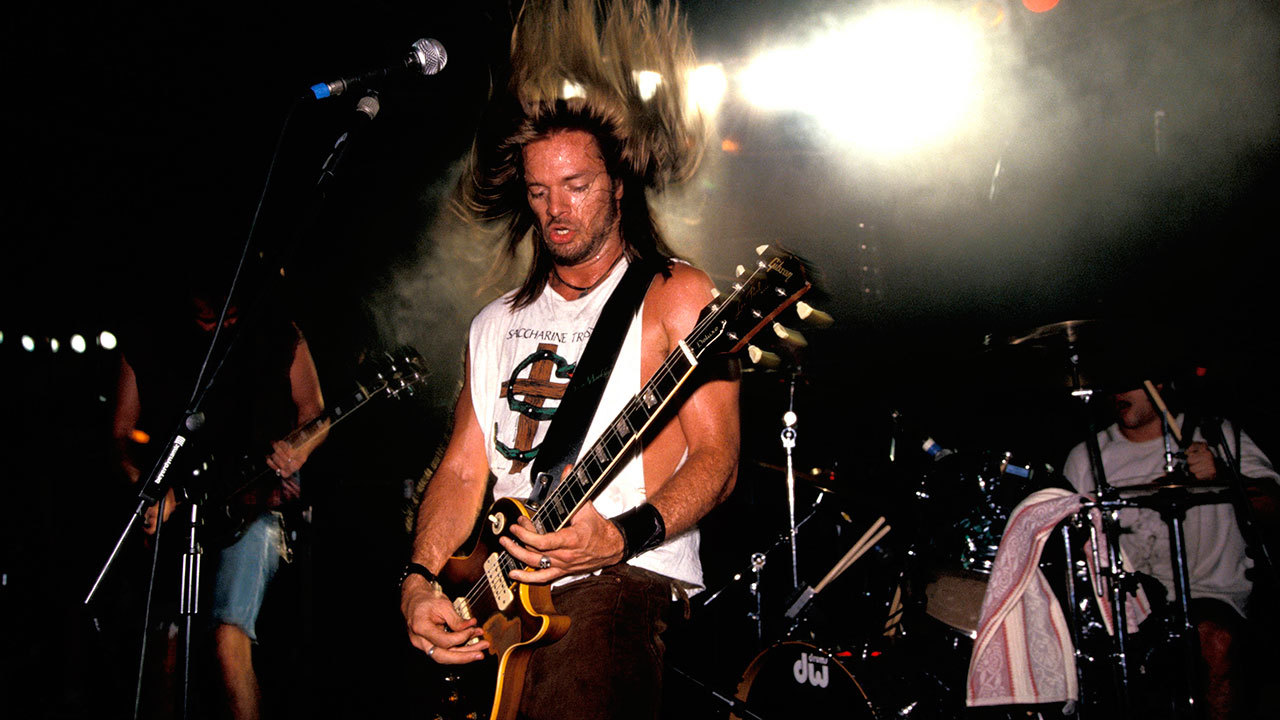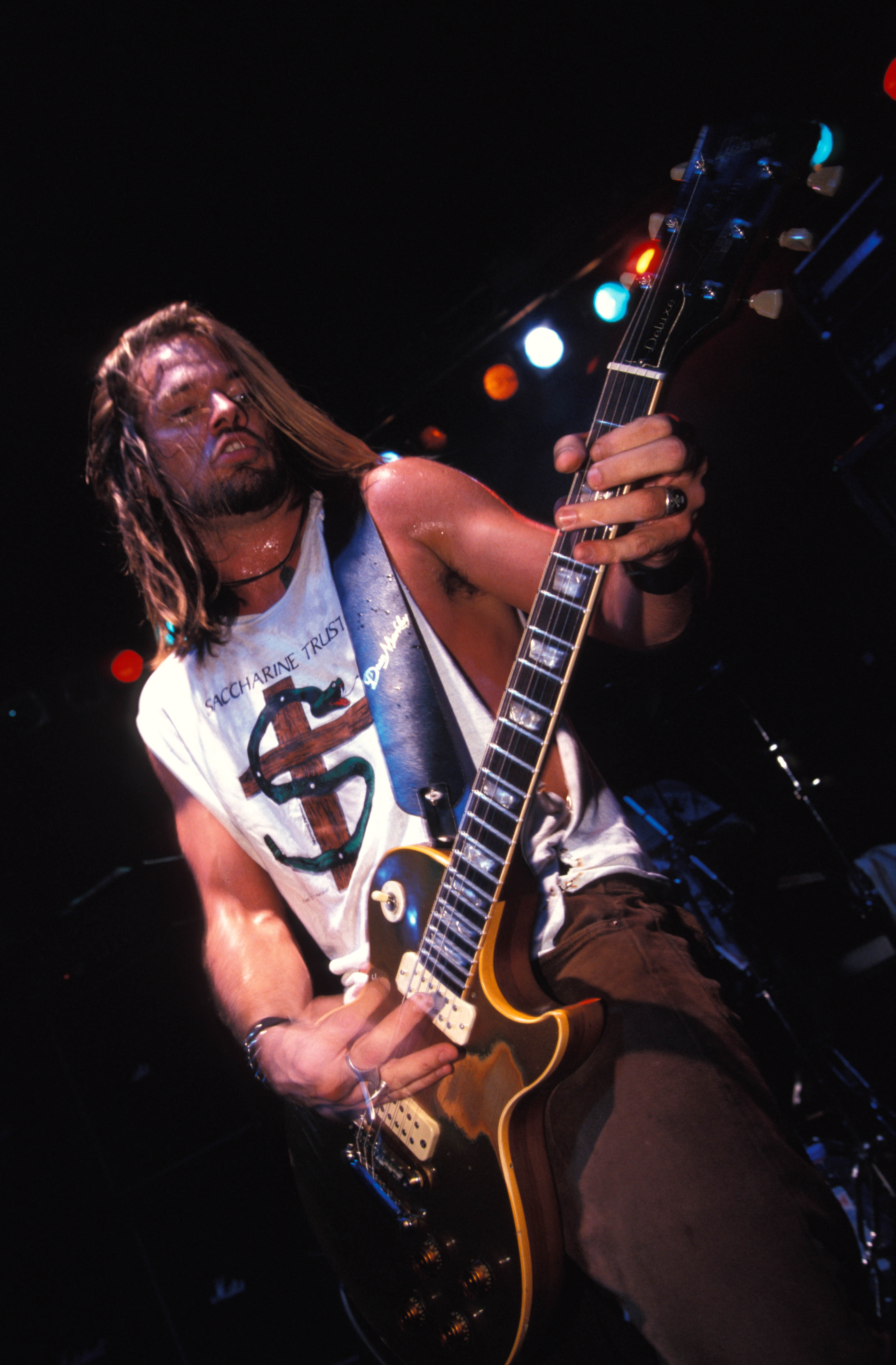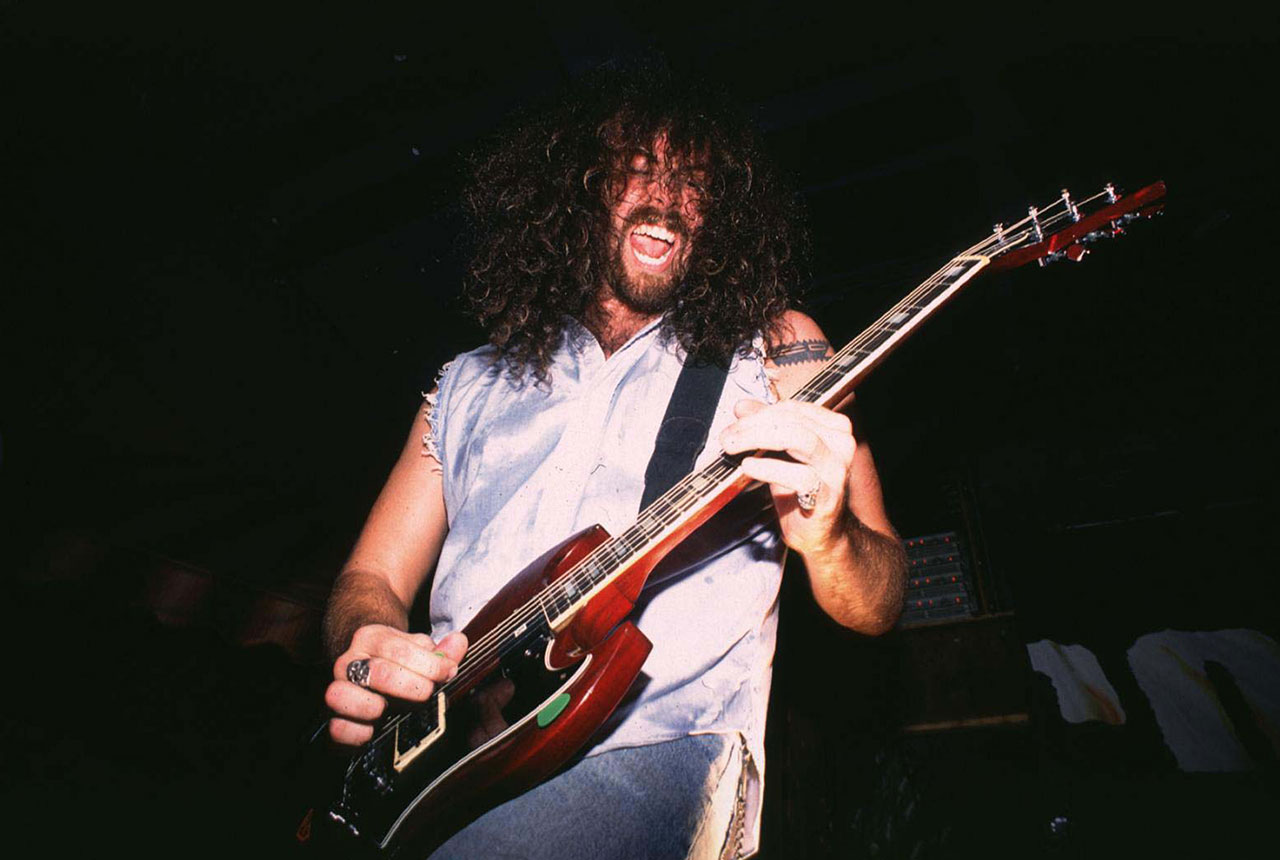The story behind Deliverance by Corrosion Of Conformity
1994: The year Alice In Chains gave us Jar Of Flies and Korn released their iconic, self-titled debut. It was also the year when Corrosion Of Conformity released the genre-defining Deliverance

Corrosion Of Conformity (or COC, as they’re more affectionately known) started in Raleigh, North Carolina during 1982. The original lineup featured vocalist Eric Eycke, bassist Mike Dean, guitarist Woody Weatherman and drummer Reed Mullin. However, after the release of debut album Eye For An Eye in 1984, Eric left, the remaining trio going on to record 1985’s Animosity, with Mike and Reed on vocals.
The arrival of former Ugly Americans singer Simon Bob Sinister led to the 1987 EP Technocracy, before the band began to change direction. Until then, the style had a punk/hardcore approach, with hints of thrash. Now, with both Mike and Simon departing, COC went for a heavier, more metal approach. In came vocalist Karl Agell, guitarist Pepper Keenan and bassist Phil Swisher. 1991’s Blind got the band a lot more attention, with the new metal style ensuring that the song Vote With A Bullet became an immediate favourite.
But, there was further upheaval on the horizon. Karl and Phil quit to form stoner band Leadfoot, Mike returned, Pepper took over on vocals and COC signed to Columbia – in time for 1994’s Deliverance…
Well, that’s the simplistic version of events. But the reality behind Deliverance is complex, painful and not a little stressful. That is, if you’re Pepper Keenan.
“Here’s the way it was: we were signed to an independent label called Relativity. They’d put out Blind, but musically things changed when we started the process for the next record; we’d moved totally away from that hardcore metal scene. We’d written the song Albatross, and had already gotten the Skynyrd vibe going on. The truth is that we were determined to become a different type of band.”
On the advice of Billy Corgan from The Smashing Pumpkins – a fan of the Blind album – COC went to Southern Tracks Studios in Atlanta, teaming up again with producer John Custer (who had worked with them on the previous album), and they started working on the basic recordings. Which is where the problems began.
“We were on a real roll, and things were coming out so well. Then Karl came down to the studio, and it was obvious to all of us that he wasn’t up to the standard we needed. His vocals were wrong, his lyrics weren’t right. We knew it, John Custer knew it. So we made the decision to get rid of him. At which point, Phil Swisher freaked out and quit, which was OK by us.” Now, bear in mind that right at this juncture, COC had very little money. They were working on the sort of tiny budget a small label in the early 1990s could afford to give to a band. This wasn’t a massive project with bottomless pockets. Therefore, the band’s choice to switch vocalists had consequences.
Sign up below to get the latest from Metal Hammer, plus exclusive special offers, direct to your inbox!
But slowly things began to take a fresh shape. Firstly, Mike Dean elected to return to rejoin COC, which proved to be crucial.
“Mike was living in the jungle some- where, but got to hear a tape of what we’d done. And he liked it. So much so that he asked to come back, which suited us just fine. The first thing we did was play him a track which, at the time, was called ‘The Thin Lizzy Song’, and would later become Clean My Wounds. You know, Mike totally turned it around. He came up with this amazing walking bass line, and everything just seemed to fit into place.”
So, the first nightmare had been dispersed. But the band were still without a singer, and time was skipping merrily towards the inevitability that money would soon run out… then Dean made a momentous suggestion.
“I’d been working my ass off writing lyrics. We’d been auditioning vocalists with no luck. Then one day, Mike just said to me, ‘Why don’t you sing?’ I’d done the vocals on Vote With A Bullet, so I thought about it, and off we went. The first thing I did was Albatross, and it just came across as being correct. We went from there.”

After nearly two years in the studio, finally COC had an album finished, but there was another hurdle – more like a huge wall with spikes and an electrified fence – facing them. The band did not want to release their lovingly created record through Relativity.
“By then, and we’re talking the mid-1990s, they’d really gone on to backing hip hop bands like 24-7 Spyz. We didn’t fit in at all, with our new sound. So, we asked them to let us go. They refused.”
It was an impasse that took the sort of turn you’d only find in an improbable movie scripted by a total fantasist on a major acid trip. Enter Columbia Records.
“Somehow, and I don’t know what happened, a tape of the album got to Don Ienna, who was the President of Columbia Records. He freaked out over it, wanted to sign us. So, he contacted Relativity and…” The band were bought off the indie label and ended up happy ever after with a major company? No, that would have been far too easy for COC.
“Relativity refused to give us up. They’d paid for the record, and were not gonna hand it over to anyone. We were stuck. All of us were flat broke, I was living on some- one’s floor, and just as it looked as if things were going our way, we were crippled.”
So, that might have been the end of the matter, had it not been for the most outrageous twist of them all.
“One day, someone connected with Columbia said to me, ‘Check the New York Times financial pages.’ I was intrigued, got a copy and… holy shit! There it was: ‘Sony Buy Out Relativity’. Sony, who owned Columbia, had only gone out and bought Relativity and made them a small arm of their operation. I swear, I was told that the only reason Sony had done this was to get the COC album. That sounds fucking insane, but it’s what people connected to Columbia said to me. I called up all the guys, informed them that we were now on a big label, and then went out and got more drunk than I’d ever been in my life!”
- Reed Mullin makes unexpected Corrosion Of Conformity return
- Watch Corrosion Of Conformity's entire set live from Bloodstock 2016
- Road Trippin': Corrosion Of Conformity
- Corrosion Of Conformity in studio to record new album
Finally, after all the agonies there was ecstasy for COC. The quartet’s commitments to an album that seemed to be doomed was paying off.
“I tell you how bad it got in the studio. We’d already paid for the time there when we got rid of Karl. There was no way we’d ever get the money back. In desperation and for something to do, Woody Weather- man, John Custer and I wrote instrumental pieces. We never had any clue what to do with them at the time, but they ended up being ‘interludes’ between the songs. When Deliverance was released, everybody thought it was an amazing idea. The truth was that it was simply something we’d come up with to use up studio time we’d already paid for. But that was typical of this album – we did things without realising how far-reaching they might be.”
Deliverance was released – at last! – in late September 1994, and started to create a genuine buzz. Fuelled by the radio success of Clean My Wounds, which also appeared on the soundtrack for Tekken: The Motion Picture, and Albatross, it went on to become COC’s biggest-selling album. Official figures in 2005 put US sales alone at 440,000, just 60,000 short of earning the band a gold record.
“By now it must have gone past that mark,” muses Pepper. “But I still don’t have a gold record on my wall!”
Things were really going COC’s way, as they were invited to be part of the bill for the 1995 Monsters Of Rock Festival at Donington, headlined by Metallica.
“Metallica personally chose every band on the bill, so it was a real honour for us to be included. We also got to open for them when they played a ‘secret’ warm-up show beforehand at what was then called the LA2 in London. So, we’d gone from being these broke musicians with no sort of a future to having James Hetfield coming up, as he did, and slapping me on the back, saying, ‘Hey man, great album.’”

For Pepper, the best thing about Deliverance was for the band to prove so many people wrong, by being utterly determined to do what they believed to be right.
“I recall when we had a tape of the songs without vocals, we knew it was the right move to make, even though everything was against us. That’s what I’m most proud of. At a time when the world was going Seattle crazy, we were listening to classic rock like Grand Funk Railroad, and insisting that’s where wanted to be.
“We’d grown up with Sabbath, but really couldn’t play what they did. That’s why the early stuff sounds like Sabbath sped up! But we got so into the Southern vibe, and we were doing it when it was far from trendy. You could say we began the revival, and gave the idea to so many others.”
The other thing Pepper is delighted about is the way Deliverance severed those hardcore connections.
“We were fed up with that scene. It was going round in circles, offering nothing new. But when we came out with this album, so many hardcore bands and fans accused us of selling out. I thought it was laughable. Like what they were doing was true hardcore? I’ll tell you what was ‘hardcore’: COC going onstage and facing all those fans and playing Albatross. That took balls – that’s being more true to the spirit of the movement than anybody else.
“Then, 10 years after the album was released, we had all these hardcore dudes who’d publicly hammered us, coming up and asking for our autographs on vinyl copies of Deliverance. They apologised to us for being the way they’d been at the time. That’s what I call vindication!”
Corrosion Of Conformity's Reed Mullin suffers booze-related seizure
Malcolm Dome had an illustrious and celebrated career which stretched back to working for Record Mirror magazine in the late 70s and Metal Fury in the early 80s before joining Kerrang! at its launch in 1981. His first book, Encyclopedia Metallica, published in 1981, may have been the inspiration for the name of a certain band formed that same year. Dome is also credited with inventing the term "thrash metal" while writing about the Anthrax song Metal Thrashing Mad in 1984. With the launch of Classic Rock magazine in 1998 he became involved with that title, sister magazine Metal Hammer, and was a contributor to Prog magazine since its inception in 2009. He died in 2021.

